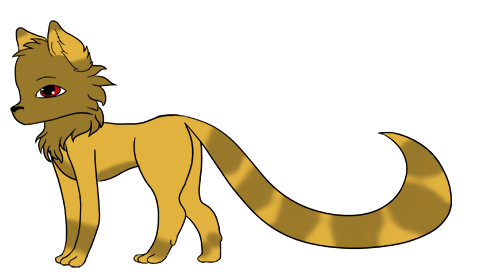Kir’eshal
Basic Information
Anatomy
Genetics and Reproduction
Females are in heat for one to six days. Gestation that can last from 52 to 53 days. Their litters range in size from four to five with an 80 percent success rate in becoming pregnant. The largest recorded litters have had eight cubs.
Growth Rate & Stages
Newborn cubs are blind, deaf, dark brown in colour and weigh about 120g.
After fourteen days, their eyes open. Their pupils are slate-blue. Guard hairs appear, giving cubs a fuzzy appearance. They have small, floppy ears and weigh about 350g.
After four weeks, the cub’s pupils are grey flecked with brown. The muzzle starts to lengthen.
The coat is still woolly, but the ears are now erect.
After eight weeks, the pupils develop their mature colour and the cub’s face approaches adult proportions. Its fur is largely adult colour but still looks woolly
Throughout the summer, cubs are very similar to adults but have thinner coats and a lankier appearance. They become indistinguishable from the adults by late fall. At this point the family group breaks up and some or all of the cubs disperse.
Dietary Needs and Habits
They are classed as omnivores. Their diet is largely made up of invertebrates such as insects and small vertebrates such as reptiles and birds. They've been known to eat eggs. They eat roughly 1 kg (2.2 lb) of food every day. They cache excess food in their burrows, saving it for later.
Cubs suckle for their first four weeks, then are progressively weaned until they are seven weeks old. Some may suckle for longer.
They learn to hunt by catching insects. Once their teeth develop properly the adults will bring back larger food for them.
Additional Information
Social Structure
There is a strict dominance hierarchy within social groups. Dominant cubs receive more social grooming from adults, are more strongly integrated into the social group and less likely to disperse in the fall. They have access to larger portions of food and tend to look larger than their litter mates.
A social group consists of three or four adults though where food is plentiful these groups can be as large as seven adults. These consist of equal numbers of males and females.
In smaller groups only one vixen breeds, but in the larger groups up to three do. Cubs are pooled together in one large litter in such cases. All adults take responsibility for caring for the cubs.
Facial characteristics
They have three common eye colours: red, orange, and gold.
Geographic Origin and Distribution
They're primarily found in the northern desert.
Perception and Sensory Capabilities
They rely on their senses of smell in order to hunt their prey.
Lifespan
In the wild they live for 10 years. A domesticated one can live up to 40.
Average Weight
Males weigh on average between 4.1 and 8.7 kg (9.0 and 19.2 lb). The females weigh slightly less.
Body Tint, Colouring and Marking
Their fur is sandy brown in colour. The darker markings on their bodies vary by individual.





Comments